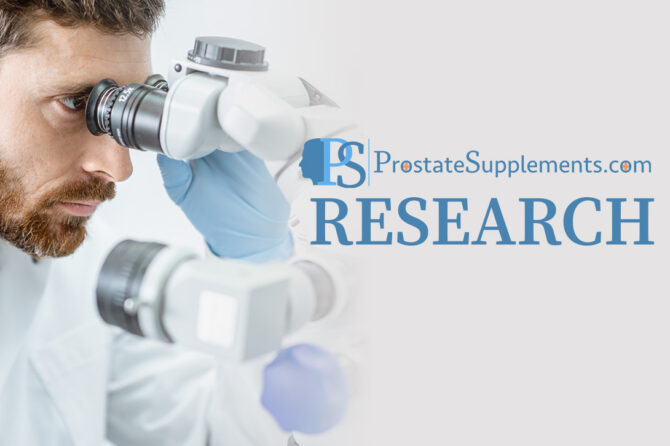
Orchic Extract: What We Know (and Don’t) About Its Effects on Men’s Health, Prostate Health, and the Urinary Tract
Orchic extract (also labeled bovine orchic/testicular extract) is a glandular supplement made from cattle testes. It’s marketed for “testicular support,” libido, and testosterone—but there’s no good clinical evidence in humans that it improves testosterone, sexual function, fertility, prostate health, or urinary symptoms. Major consumer-health monographs conclude that efficacy is unproven and safety is uncertain due to the animal origin of the raw material. Regulations exist to reduce prion (BSE) risk in bovine-derived ingredients, but they do not establish that orchic extract is effective or risk-free. If your goal is hormone or prostate support, evidence-based lifestyle and medical options are better supported by data.
What is Orchic Extract?
“Orchic” refers to the testes. Orchic extract is a dietary supplement produced from bovine testicular tissue, usually desiccated and milled into powder for capsules or tablets, sometimes branded within “organotherapy/glandular” product lines. Contemporary health references uniformly state that orchic extract is used to “maintain healthy testicular function,” but there is no good scientific evidence supporting these claims.
Historical context
Before purified hormones were available, early 20th-century “organotherapy” used animal organ extracts—including testicular tissue—in hopes that “like supports like.” The biochemical era that followed led to the isolation and synthesis of testosterone, which replaced crude glandulars in medicine. Today, organ extracts persist mainly in alternative/naturopathic markets, not in evidence-based endocrinology.
Proposed Mechanisms (and Why They’re Unconvincing)
Marketing narratives suggest orchic extract contains peptides, enzymes, “hormone precursors,” or nucleotides that nourish homologous human tissues. However:
- It’s not a testosterone therapy. Orchic extract is not established as a source of testosterone or as a way to raise testosterone levels. If present, steroid hormones would be digested in the gut and not reliably act systemically at meaningful levels.
- No validated pharmacology in humans. There are no contemporary, well-controlled human trials demonstrating endocrine or reproductive effects from orally ingested bovine testicular powder. Reviews of “testosterone-boosting” supplements do not identify orchic extract as effective.
Evidence Review by Outcome
1) Men’s Health & Testosterone
- Human data: Absent. No randomized controlled trials (RCTs) demonstrate that orchic extract raises serum testosterone, improves symptoms of hypogonadism, or enhances athletic performance.
- Comparators: When testosterone improvement is documented in supplement research, it tends to involve otherbotanicals (e.g., fenugreek, ashwagandha) with mixed but tangible RCT signals—not orchic extract.
2) Prostate Health (BPH, PSA, or Cancer Risk)
- Androgen biology matters to the prostate. Prostate tissue is androgen-sensitive, and clinical management of advanced prostate cancer relies on androgen deprivation therapy (ADT) to suppress testosterone. This underscores that exogenous androgens can influence prostate biology. Orchic extract, however, has no evidenceof behaving as an androgen therapy (positively or negatively).
- BPH/LUTS (urinary symptoms): There are no trials showing orchic extract improves lower urinary tract symptoms (LUTS) such as nocturia, urgency, or flow. Evidence-based options for BPH include lifestyle measures, alpha-blockers, 5-alpha-reductase inhibitors, or procedures when indicated—none of which involve orchic extract.
3) Fertility & Sexual Function
- Human evidence: None of quality. Claims about libido, erections, or sperm quality are anecdotal. No peer-reviewed RCTs demonstrate benefit for erectile dysfunction, ejaculatory function, or semen parameters.
Safety & Regulatory Considerations
1) General safety
- Major health references state safety is unknown due to insufficient data; animal-derived products raise theoretical contamination concerns. There are no well-characterized adverse-event profiles or drug–supplement interaction datasets for orchic extract.
2) Prion (BSE) risk and bovine materials
- The U.S. FDA’s 2016 final rule prohibits certain high-risk cattle materials (specified risk materials such as brain, spinal cord, dorsal root ganglia from older cattle; tonsils and distal ileum from all cattle) in human foods, including dietary supplements, to mitigate BSE risk. This regulation reduces—but does not absolutely eliminate—theoretical risks from bovine-derived ingredients; it does not certify that any particular glandular is safe or effective. Manufacturers must maintain records proving exclusion of prohibited materials and compliant sourcing.
- Bottom line: Reputable brands should document compliant sourcing and third-party testing. Even so, efficacy remains unproven, and long-term safety data for orchic extract in humans are lacking.
If you have prostate disease, elevated PSA, or are being evaluated/treated for hypogonadism, discuss any supplement use with your clinician. Prostate care often hinges on androgen biology, and self-treating with unproven products can delay appropriate evaluation.
Practical Use & Ingestion Forms (If Someone Chooses to Try It)
This is not an endorsement—just a factual overview of how products are marketed.
- Forms: Capsules or tablets containing desiccated bovine testicular tissue; some proprietary blends market “PMG/protomorphogen” extracts (a brand term for peptide/nucleotide fractions). Labels vary widely. There is no evidence-based dose or standardized preparation for health outcomes.
- Dosing: Authoritative references explicitly state that appropriate dosing is unknown for orchic extract. If someone uses it anyway, they’re effectively experimenting; professional medical guidance is recommended.
- Quality cues: Prefer products with transparent bovine sourcing (BSE-compliant countries), lot tracing, and third-party testing for identity and contaminants. This mitigates—but cannot erase—risks inherent to animal-derived glandulars.
Evidence-Based Alternatives for Common Goals
- Low testosterone (confirmed by labs + symptoms): Clinically indicated testosterone replacement therapyunder medical supervision; and lifestyle interventions (sleep, resistance training, weight loss if overweight). Selected botanicals (e.g., fenugreek, ashwagandha) have some supportive RCTs but results are mixed and context-dependent.
- Prostate/LUTS: Physician-guided evaluation; proven options include alpha-blockers, 5-AR inhibitors, minimally invasive procedures, and lifestyle modifications (fluid timing, caffeine/alcohol moderation).
Bottom Line
- What’s supported: Historical use and marketing claims—not modern, controlled human data.
- What’s unknown: Effective dose, long-term safety, drug interactions, and real-world clinical benefits.
- What to do: If you’re targeting testosterone, sexual function, or prostate/LUTS, choose options with evidence, and involve a clinician—especially if you have prostate concerns, are on ADT, or are considering hormone therapy.


Leave a reply